It looks like you're using an Ad Blocker.
Please white-list or disable AboveTopSecret.com in your ad-blocking tool.
Thank you.
Some features of ATS will be disabled while you continue to use an ad-blocker.
share:
a reply to: Observationalist
The transition and subsequent outlawing and later demonisation of the old ways is well documented.
The classification of Pictish stones show the transition into Christianity in the early centuries...
While this system is not accurate for all stones as some are incomplete and could have had symbols or motifs on missing parts, there is clearly observational evidence of the transition from pictish symbol to Christian motif on complete standing stones across Scotland, and way before 200AD.
In later centuries after this transition and the church firmly having its foot in the door, the old ways were suppressed, even outlawed...
Source: wiki.
This corroborates what is stated in the OP regarding the many churches that are built on sites formerly regarded as sacred that include wells and springs.
The transition and subsequent outlawing and later demonisation of the old ways is well documented.
The classification of Pictish stones show the transition into Christianity in the early centuries...
Class 1 — unworked stones with pictish symbols only incised. There is no cross on either side. Class 1 stones date back to the 6th, 7th and 8th century.
Class 2 — stones of more or less rectangular shape with a large cross and symbols on one or both sides. Class 2 stones date from the 8th and 9th century.
Class 3 — these stones feature no idiomatic Pictish symbols. The stones can be cross-slabs, recumbent gravemarkers, free-standing crosses, and composite stone shrines. They originate in the 8th or 9th century.
While this system is not accurate for all stones as some are incomplete and could have had symbols or motifs on missing parts, there is clearly observational evidence of the transition from pictish symbol to Christian motif on complete standing stones across Scotland, and way before 200AD.
In later centuries after this transition and the church firmly having its foot in the door, the old ways were suppressed, even outlawed...
the "Theodosian decrees," which established a practical ban on paganism; visits to the temples were forbidden, remaining Pagan holidays abolished, the sacred fire in the Temple of Vesta in the Roman Forum extinguished, the Vestal Virgins disbanded, auspices and witchcrafting punished.
He authorized or participated in the destruction of many temples, holy sites, images and objects of piety throughout the empire.
He also issued decrees that effectively made orthodox Nicene Christianity the official state church of the Roman Empire. He neither prevented nor punished the destruction of prominent Hellenistic temples of classical antiquity, including the Temple of Apollo in Delphi, the Serapeum in Alexandria.
He dissolved the order of the Vestal Virgins in Rome. In 393, he banned the pagan rituals of the Olympics in Ancient Greece. It was not until the end of the 19th century, in 1896, that Olympics were held again.
Valentinian II quickly followed this law with a second one, which declared that Pagan temples were to be closed, a law that was viewed as practically outlawing Paganism.
The temples that were thus closed could be declared "abandoned", as Bishop Theophilus of Alexandria immediately noted in applying for permission to demolish a site and cover it with a Christian church.
Source: wiki.
This corroborates what is stated in the OP regarding the many churches that are built on sites formerly regarded as sacred that include wells and springs.
edit on 29-12-2014 by Wifibrains because: (no reason given)
A mother goddess is a goddess who represents, or is a personification of nature, motherhood, fertility, creation, destruction or who embodies the bounty of the Earth.
Several small, voluptuous figures have been found during excavations dating back to the Palaeolithic period.
Sheela na Gig is a common stone carving found in Romanesque Christian churches scattered throughout Europe. These female figures are found in Ireland, Great Britain, France, Spain, Switzerland, Norway, Belgium, and in the Czech Republic. Their meaning is not clearly identifiable as Christian, and may be a concept that survived from ancient forms of yoni worship and sacred prostitution practiced in the goddess temples. Some of the figures seem to be elements of earlier structures, perhaps devoted to goddess worship.
Wells, springs, caves, ect?
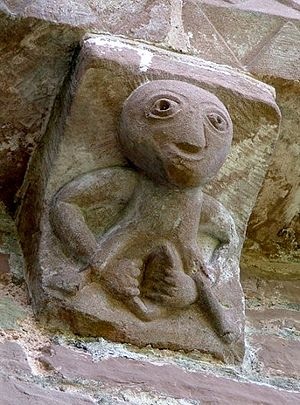
The well, therefore, was viewed as leading into the womb of the earth- mother herself, being an orifice from which life springs forth.
Other common motifs on Christian churches of the same time period are spirals and ouroboros or dragons swallowing their tails, which is a reference to rebirth and regeneration.
Other creatures including the succubus make an appearance in the sculptural reliefs of the church that have a long history in the oral tradition of previous civilizations that preceded Christianity that may relate to earlier goddess worship.
edit on 29-12-2014 by Wifibrains because: (no reason given)
originally posted by: Chronogoblin
There are no pagan origins of the church. Satan stole the ideals of God which would later come to form Judaism and Christianity, and birthed other religions. It's simple really. As second-in-Heaven only to Christ, he knew the plan. God's plan for the World, and Christ's sacrifice. The only thing he didn't know was the exact timing of it. That, and the Tower of Babel is why so many of the World's 'religions' sounds the same. Because they all intrinsically tell the same story. There is no such thing as 'nature spirits.' Unclean spirits lie, they'll tell you whatever they think you want to hear, and they are usually right. Because people are generally the same, the same tricks work again, and again. You, have been lied to. Duped. How does it feel? That's what most anti-Christians don't seem to get, the Enemy lies to your face daily, yet they don't seem to mind. When someone lies to me, I get upset. Apparently, I am the odd-man-out in that respect. So be it. I don't tolerate dishonesty. Educate yourself on God, and stop believing half-truths spoon-fed to you from the Enemy of Man.
You state these things as fact and they may well be fact to you. Objectively speaking they are not fact but rather a tradition of belief. As far as similarities that occur one can look at the flood story for instance or the creation of man and find these same stories in Sumerian writings. These things spread through the borrowing of stories through oral tradition and cultural diffusion. While your FAITH may inform your belief in the Tower of Babel story that does not make it objective fact. I would also like to point out is that a lot Christians like to point out that the anti-Christians say this and that and the enemy lies to you and that there are no nature spirits. While I would say I certainly dont believe in "All the Tree Nymph" that type of "Christian" response come across as aggressive, arrogant and a bit hypocritical. I say a bit hypocritical because a Christian could just as easily say that since "God created nature it is his spirit who dwells there".
Its also annoying that all mainstream religions, but especially many Christians, believe they have THE MONOPOLY on truth while at the same time most know very little of their own religions history outside what they are permitted to know by their church. Christians say God is merciful and compassionate but it only takes a cursory glance at the OT to see that God is jealous, vengeful, petty and arrogant. He demands absolute obedience and dishes out the most severe punishments for the most minor of crimes. He is even seen essentially working with Satan in the Book of Job. If he was all knowing he would not have taken Satan up on his challenge as he would have already known the outcome? And if he was in fact so wrathful against Satan he certainly would not have been talking to him? Also, if he is so loving why would he have put Job through all that misery just to prove a point to Satan? Why does God have to prove anything to Satan?
The other thing that strikes me as odd is that many Christians don't even realize that they aren't even practicing Christianity as the original followers of Christ apparently did? Any of you Christians hold a Passover Seder? Christianity in its modern form has been so perverted from the original by POLITICAL COUNCILS like Nicea. Additionally in the early centuries of Christian practice it was NOT a monolithic belief system. It wasn't even agreed upon if Jesus was the Son of God! As an example both Peter and Paul may have been killed by the Romans for preaching Christianity in Rome but they weren't even preaching the same religion! I could go on and on but I digress. For those interested I recommend "Zealot: The life and times of Jesus of Nazareth" by Reza Azlan, PhD.
Another point to make is Christianity did not have its roots in Pagan belief systems, however it certainly had no problem coopting their sacred dates, locations and in some cases Idols. Another thing to mention too is nowhere in the Ten Commandments does it say there is only one God. It says that the Hebrews must only worship Yaweh, their Lord, and no other Gods. Whether that means there were in fact other Gods is up for debate but it does not say Yaweh is the only one.
I personally think energies are all around us and perhaps the notion and personification of that into nameable spirits was a way to represent the inherent symbolism. The same could also be argued about the dualistic nature of the masculine/feminine. Maybe they didn't literally mean man and women or male and female energy, perhaps it was instead symbolic of something else and offered an elegant explanation for the masses. My own philosophy is along Buddhist lines with some Jungian theory(Synchronicity, etc.) , Quantum mind and universal unconsciousness. I think science and spirituality can play very nicely indeed. Perhaps science just explains some of the mechanisms by which God/The One/The Flying Spaghetti Monster operates. I strongly believe in personal Karma and fin Gnostic movements like the Cathars and Albigineseans quite intriguing. As far as modern pagan philosophies go such as Wicca I am left somewhat puzzled as they don't seem to be carrying on any ancient tradition though many Wiccans claim they are and at times, IMO, seem kind of silly. By contrast traditions undertaken by Native American populations are often genuinely of an ancient pedigree and are carried out with a strict sense of tradition. Both above traditions, Wicca and Native beliefs, claim a reverence to nature but for some reason I seem to take the latter far more seriously. That's just my personal belief. I have no monopoly on the Truth. I certainly don't believe that Wiccans(well most Wiccans), Shamans, Natives, etc. wittingly or unwittingly worshipping the devil. On the contrary, it is my view, that institutions like the Christian Churches are willfully preventing humanity from reaching true spiritual enlightenment by promising a wonderful afterlife for compliance and "good behavior" and eternal damnation to the fiery pits of Hell for disobedience.
Something fishy about the secrets of the vecsica pisces.
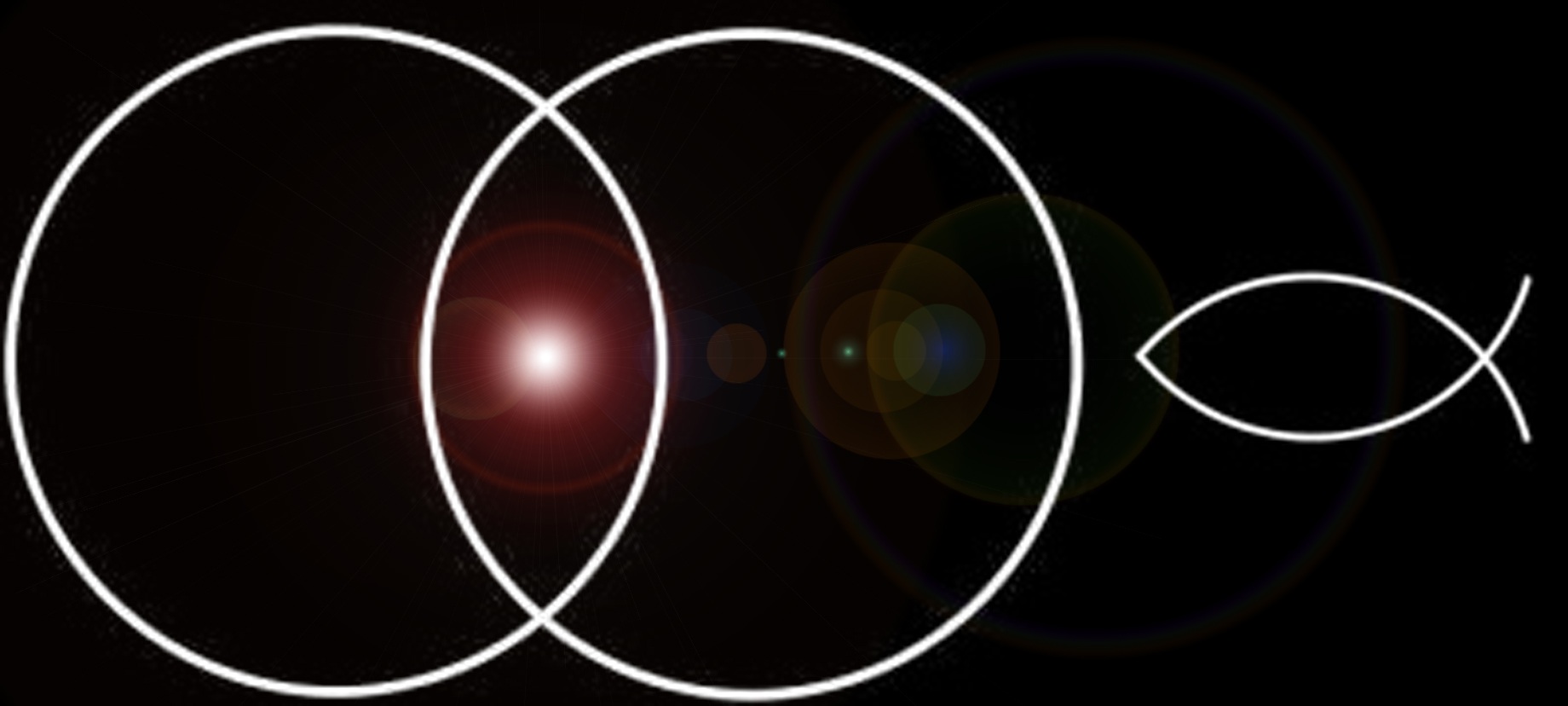
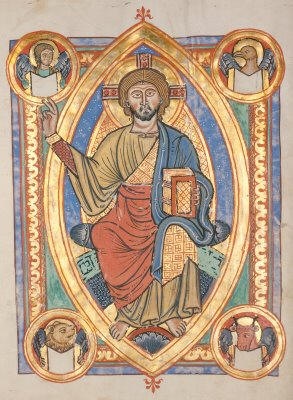

www.philomuse.com...
The Latin term Vesica Pisces, meaning "Vessel of the Fish" is the most basic and important construction in Sacred Geometry. A Vesica is formed when the circumference of two identical circles each pass through the center of the other. When a Vesica Piscis is viewed horizontally, it looks like a vagina or a womb which is why the Christ child was often pictured inside of one. When the Vesica Pisces is viewed vertically it looks like the shape of a fish.

The almond-shaped center of the image is called a mandorla (Latin for almond; "vesica" or "vesica piscis" is sometimes also used to describe only this almond-shaped center.)
A medieval hymn calls Jesus "the little fish in the Virgin's fountain." The Christ child is often shown inside a mandorla, superimposed over Mary's womb.

Mary herself can be equated with the goddess Aphrodite Marina, who brought forth all the fish in the oceans; Marina's blue robe and pearl necklace, like the Christian Mary's, are classic symbols of the sea. On Cyprus, Mary to this day is worshipped as "Panaghia Aphroditessa."

The connections are many: the Vesica Piscis illumines the common heritage of Christianity and the Goddess traditions it absorbed, traditions it would later vilify and all but destroy.
www.philomuse.com...
edit on 29-12-2014 by Wifibrains because: (no reason given)
a reply to: Wifibrains
Thanks for the thurogh reply. I'm still not convinced one could confidently say the origins of Christianity are pagan. There are a lot of assumptions that need to be made to make that connection.
I understand the coincidence of the symbolism is interesting, but you can't reach forward and conclude that it was the same in the past.
I think that you could say the Catholic Church has some roots in Paganism. Especially when you read more about the motivations of Theodosian.
The Catholic Church was a mandate from man not from God. If you read the Bible you will see the contrast in the teachings of Jesus verses the actions of the men who started the Catholic Church. They wanted to keep the scriptures away from their followers, making them rely on the "genius" of men to make them "Holy", even adding Mary as a goddess of sorts, I believe to keep them from the true message of the power of salvation through Jesus found in the Bible.
To me the Bible can stand alone without the aid of a priest and within it is everything for man to understand his position in a world created by a loving, just God.
I think it also requires a measure of faith to believe in the pagan origins of Christianity. With that kind of position it is awfully convienant to walk away from and ignore that which is tugging on ones soul, and wash your hands clean.
Sorry for the late reply. I hope you had a safe and fun New Years.
Thanks for the thurogh reply. I'm still not convinced one could confidently say the origins of Christianity are pagan. There are a lot of assumptions that need to be made to make that connection.
I understand the coincidence of the symbolism is interesting, but you can't reach forward and conclude that it was the same in the past.
I think that you could say the Catholic Church has some roots in Paganism. Especially when you read more about the motivations of Theodosian.
The Catholic Church was a mandate from man not from God. If you read the Bible you will see the contrast in the teachings of Jesus verses the actions of the men who started the Catholic Church. They wanted to keep the scriptures away from their followers, making them rely on the "genius" of men to make them "Holy", even adding Mary as a goddess of sorts, I believe to keep them from the true message of the power of salvation through Jesus found in the Bible.
To me the Bible can stand alone without the aid of a priest and within it is everything for man to understand his position in a world created by a loving, just God.
I think it also requires a measure of faith to believe in the pagan origins of Christianity. With that kind of position it is awfully convienant to walk away from and ignore that which is tugging on ones soul, and wash your hands clean.
Sorry for the late reply. I hope you had a safe and fun New Years.
originally posted by: Observationalist
a reply to: Wifibrains
I'm still not convinced one could confidently say the origins of Christianity are pagan. There are a lot of assumptions that need to be made to make that connection.
I think the premise is that the early Christian church made a point of overlapping it's liturgical practices with those of the existing non-Christian faiths in order to give them context and make them palatable to the targeted 'initiates'. As this thread amply illustrates, it's pretty obviously been the practice through the ages. Folks need to take their blinkers off and instead of regarding this circumstance as a threat, consider it an affirmation of ancient truths.
a reply to: Observationalist
Well this really is just the tip of the iceberg. There is something to be found under every single stone the church is built on.
When the coincidences mount up they then lead to evidence. Although circumstantial, this evidence can be used as a lead, leading to more evidence, perhaps something more substantial?
I agree. They vilified many of the ancient aspects, it is more shrouded in mystery through the bible.
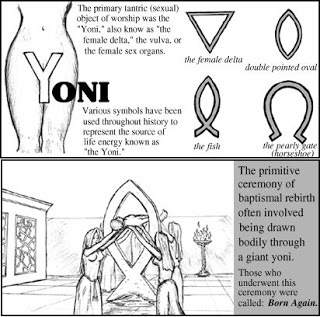
Many of the visions and journeys in the bible have a shamanic undertone to them. Jacob for example, put his head on a rock under a tree, then has a dream or vision.
The artwork also has clues as to what just happened. Notice how Jacobs head and shoulders are coming through a yoni/vulva?
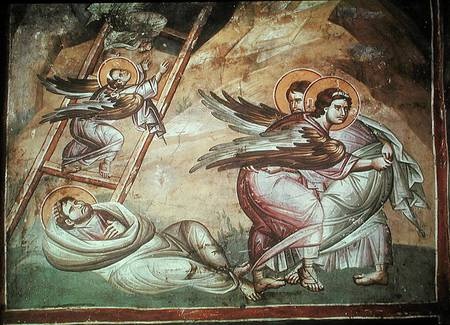
You will find the yoni in many pictures of this scene, either in the tree above Jacob, or in the folds of his robes symbolising the doorway facilitating this vision.
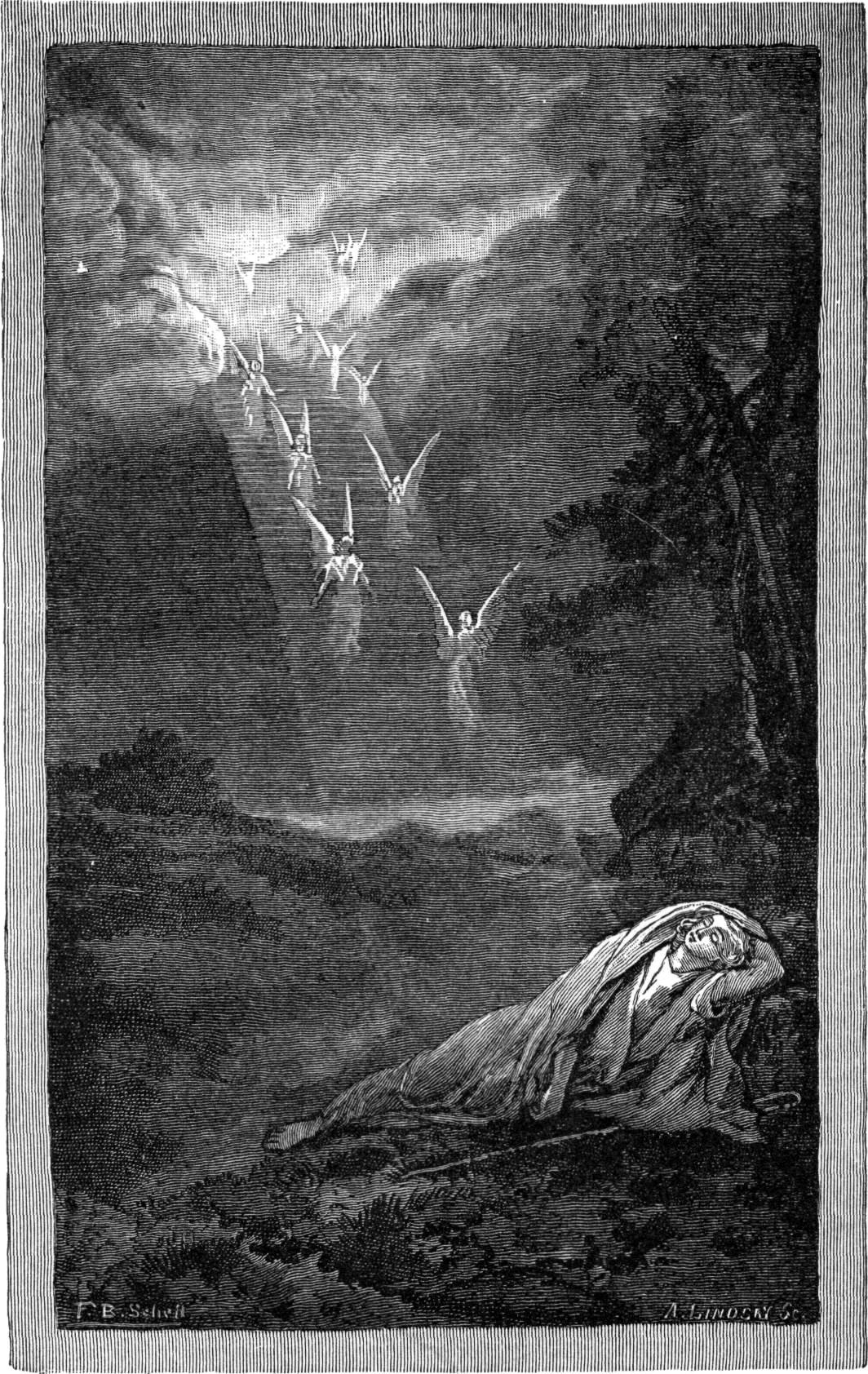
Sometimes it is shown on the rock...
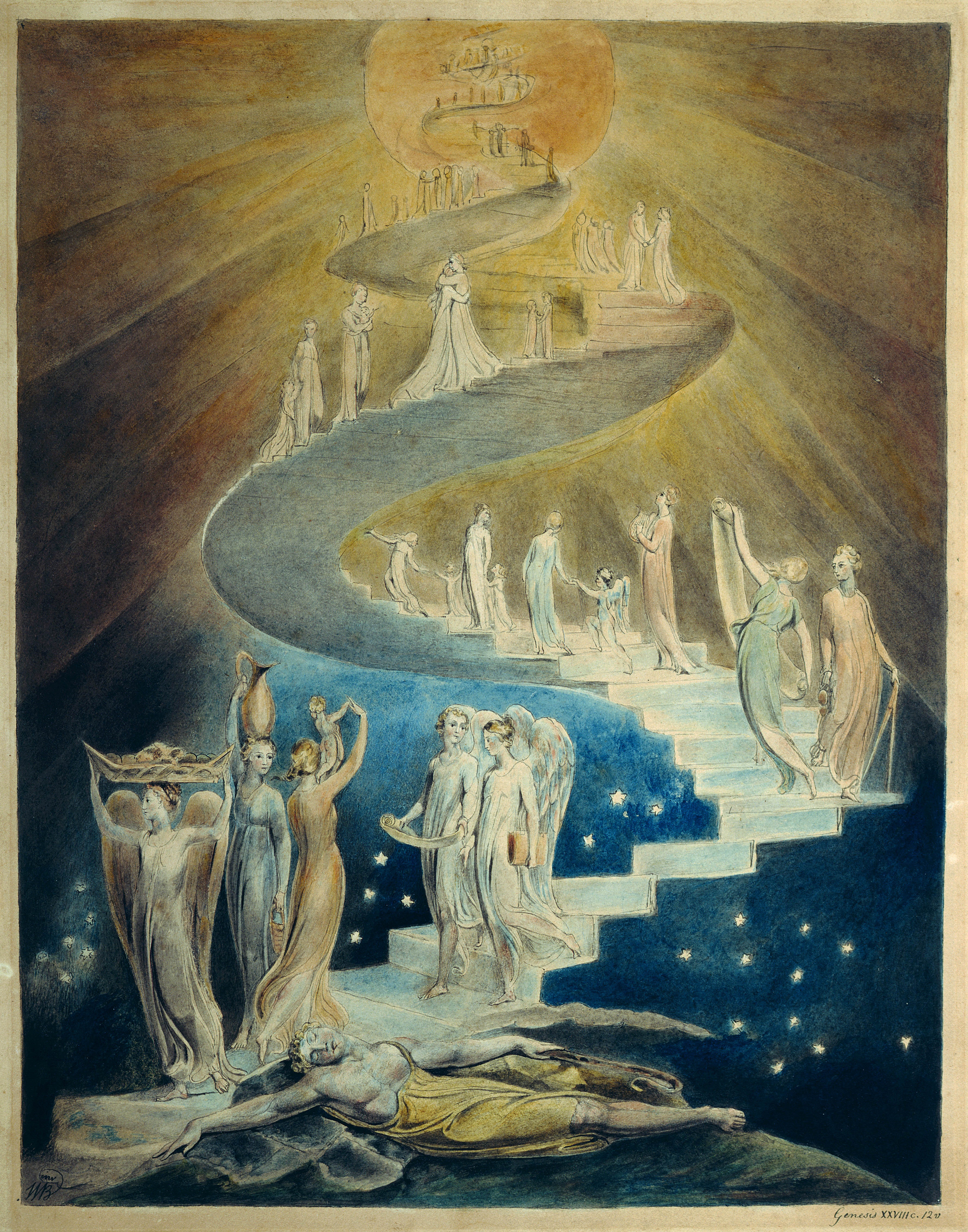

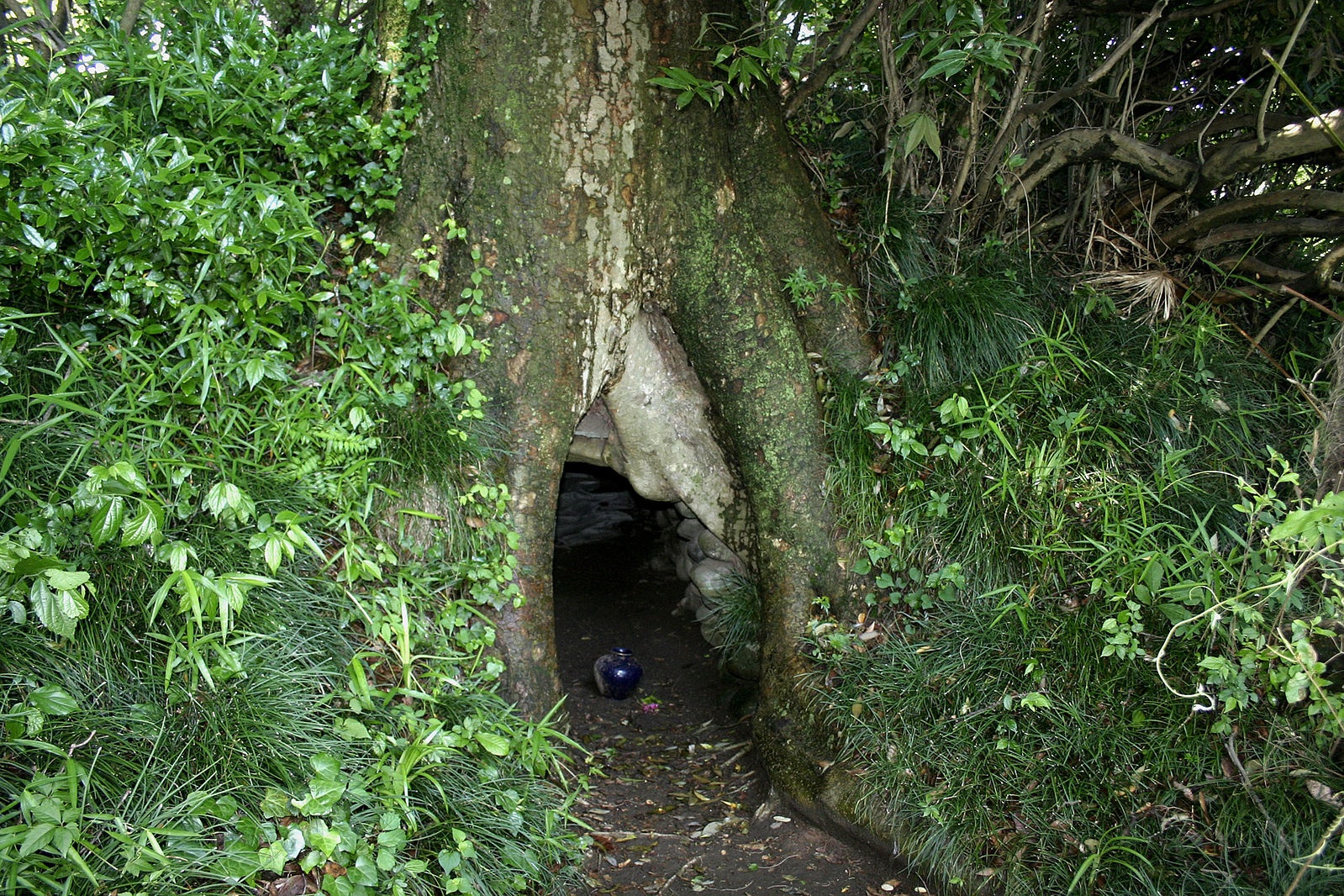
These would be considered doorways to the land of the fae in celtic and folk lore, a doorway to the otherworld of ancestral spirits.. Heaven in Christian terms?
Maybe? I would not know, I'm neither Christian nor pagan. I am a free spirit.
exactly.
Thanks, and all the best to you and yours for 2015.
originally posted by: Observationalist
a reply to: Wifibrains
Thanks for the thurogh reply. I'm still not convinced one could confidently say the origins of Christianity are pagan. There are a lot of assumptions that need to be made to make that connection.
Well this really is just the tip of the iceberg. There is something to be found under every single stone the church is built on.
I understand the coincidence of the symbolism is interesting, but you can't reach forward and conclude that it was the same in the past.
When the coincidences mount up they then lead to evidence. Although circumstantial, this evidence can be used as a lead, leading to more evidence, perhaps something more substantial?
I think that you could say the Catholic Church has some roots in Paganism. Especially when you read more about the motivations of Theodosian. The Catholic Church was a mandate from man not from God.
I agree. They vilified many of the ancient aspects, it is more shrouded in mystery through the bible.

To me the Bible can stand alone without the aid of a priest and within it is everything for man to understand his position in a world created by a loving, just God.
Many of the visions and journeys in the bible have a shamanic undertone to them. Jacob for example, put his head on a rock under a tree, then has a dream or vision.
Then Jacob awoke from his sleep and said, "Surely the Lord is in this place; and I did not know it." And he was afraid, and said, "This is none other than the house of God, and this is the gate of heaven.
The artwork also has clues as to what just happened. Notice how Jacobs head and shoulders are coming through a yoni/vulva?

You will find the yoni in many pictures of this scene, either in the tree above Jacob, or in the folds of his robes symbolising the doorway facilitating this vision.

Sometimes it is shown on the rock...

In Shamanism, it is through this doorway that the shaman passes on his spirit journey into the other world, the spirit world.


These would be considered doorways to the land of the fae in celtic and folk lore, a doorway to the otherworld of ancestral spirits.. Heaven in Christian terms?
I think it also requires a measure of faith to believe in the pagan origins of Christianity.
Maybe? I would not know, I'm neither Christian nor pagan. I am a free spirit.
With that kind of position it is awfully convienant to walk away from and ignore that which is tugging on ones soul, and wash your hands clean.
exactly.
Sorry for the late reply. I hope you had a safe and fun New Years.
Thanks, and all the best to you and yours for 2015.
edit on 1-1-2015 by Wifibrains because: (no reason given)
edit on 1-1-2015
by Wifibrains because: (no reason given)
edit on 1-1-2015 by Wifibrains because: (no reason given)
originally posted by: JohnnyCanuck
originally posted by: Observationalist
a reply to: Wifibrains
I'm still not convinced one could confidently say the origins of Christianity are pagan. There are a lot of assumptions that need to be made to make that connection.
I think the premise is that the early Christian church made a point of overlapping it's liturgical practices with those of the existing non-Christian faiths in order to give them context and make them palatable to the targeted 'initiates'. As this thread amply illustrates, it's pretty obviously been the practice through the ages. Folks need to take their blinkers off and instead of regarding this circumstance as a threat, consider it an affirmation of ancient truths.
I believe there needs to be distinction here between the pagan origins of the Catholic Church and Christianity.
The Catholic Church and it’s rise to power was miles apart from anything that was taught by Jesus Christ and his Apostles. In the New Testament there is no mention of the papacy, worship of Mary, or many other components of the Catholic Faith. If the life of Jesus was to be the ultimate example of how we should live, they missed it big time. They can claim what they want but their actions do not represent the faith of the early Christians.
Christianity does not live or die by the action of the Catholic Church.
Origins of the Catholic Church
The Roman Catholic Church contends that its origin is the death, resurrection, and ascension of Jesus Christ in approximately AD 30. The Catholic Church proclaims itself to be the church that Jesus Christ died for, the church that was established and built by the apostles. Is that the true origin of the Catholic Church? On the contrary. Even a cursory reading of the New Testament will reveal that the Catholic Church does not have its origin in the teachings of Jesus or His apostles. In the New Testament, there is no mention of the papacy, worship/adoration of Mary (or the immaculate conception of Mary, the perpetual virginity of Mary, the assumption of Mary, or Mary as co-redemptrix and mediatrix), petitioning saints in heaven for their prayers, apostolic succession, the ordinances of the church functioning as sacraments, infant baptism, confession of sin to a priest, purgatory, indulgences, or the equal authority of church tradition and Scripture. So, if the origin of the Catholic Church is not in the teachings of Jesus and His apostles, as recorded in the New Testament, what is the true origin of the Catholic Church?
This is why I asked for a time line from Wifi.
I don't think it's fair to mash up theological history all into this Christian/pagan meatloaf, and be expected to eat it. It sounds good but what's really in it.
edit on 2-1-2015 by Observationalist because: Spacing issue
Can we can compare the place Jacob had his vision to a pagan temple?

Maybe the grove was the temple, place where god might be found... Moses spoke to a bush!


Just maybe? Lol.
Sacred nature, replaced with a false idol, a graven image.
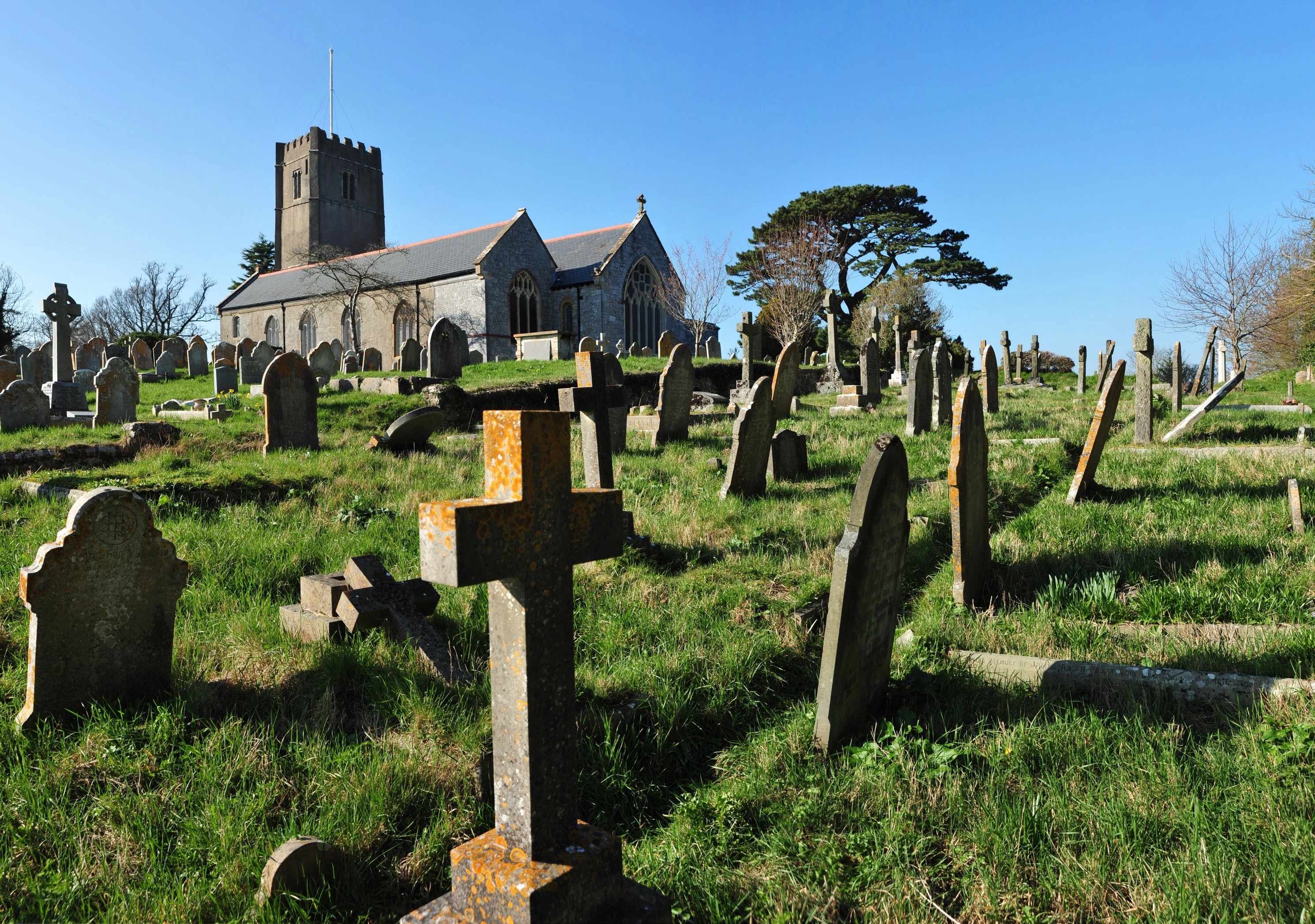

Though today we call most Greek religious buildings "temples," the ancient pagans would have referred to a temenos, or sacred precinct. Its sacredness, often connected with a holy grove was more important than the building itself.
The Romans usually referred to a holy place of a pagan religion as fanum; in some cases this referred to a sacred grove, in others to a temple.
Maybe the grove was the temple, place where god might be found... Moses spoke to a bush!


In religious discourse in English, temenos has also come to refer to a territory, plane, receptacle or field of deity or divinity.
Just maybe? Lol.
Holy groves were important features of the mythological landscape and cult practice of Celtic, Baltic, Germanic, ancient Greek, Near Eastern, Roman, and Slavic polytheism, and were also used in India, Japan, and West Africa. Examples of sacred groves include the Greco-Roman temenos, the Norse hörgr, and the Celtic nemeton, which was largely but not exclusively associated with Druidic practice. During the Northern Crusades, there was a common practice of building churches on the sites of sacred groves.
Sacred nature, replaced with a false idol, a graven image.

edit on 2-1-2015 by Wifibrains because: (no reason given)
a reply to: Wifibrains
Alright I'm done with addressing the first sentence of your thread. Sorry to derail it a bit.
The Bible does talk about territorial spirits
Perhaps there is a connection to what your talking about with these pagan/holy sites.
Knowing the misguided nature of the Catholic Church and it's pagan influence there could be two scenarios.
1. They thought they would do God a favor and stamp out these "evil" spirits themselves by occupying their territory. This action against demons is not condoned in the Bible
So a typical move by the arrogant Church. Their action would backfire and those pagan who stowed away could now access their spirit guides and exert more power and influence over the church.
2. This was part of the pagan influence in the church from the beginning. There was no righteous intentions but simple deception of a gullible people who were intimidated by their power. No one says anything for fear of death or exile.
As for the art and symbolism, I believe that the spiritual world was much more active and visible in ancient times. Many in those days observed a spiritual battle for the mind of men. Spirits of deception battling spirits of truth (angles and demons). So the art and symbolism we see in those times are these individual impression of this active spiritual realm influence over them.
Whearther they are accurate depiction of actual events or individuals is subjective, it's fun to imagine and assume intent, and that's basically what we're doing here.
Alright I'm done with addressing the first sentence of your thread. Sorry to derail it a bit.
The Bible does talk about territorial spirits
“Territorial Spirits” is a term some Christians use to identify demonic occupation of a specific geographic location. Ironically, it is also a term pagans use to describe an otherworldly presence believed to be residing in a specific geographical location.
Perhaps there is a connection to what your talking about with these pagan/holy sites.
(Reference above link)
The Christian concept of territorial spirits comes from passages such as Daniel 10; John 12:31; John 14:30; John 16:11; Mark 5:10; and Ephesians 6:12. All of these passages imply that fallen angels have been given some type of responsibility over a certain area. Thus, they seem to be territorial.
Knowing the misguided nature of the Catholic Church and it's pagan influence there could be two scenarios.
1. They thought they would do God a favor and stamp out these "evil" spirits themselves by occupying their territory. This action against demons is not condoned in the Bible
(Reference above link)
The problem inherent in the term “territorial spirits” is that some Christians believe it is their duty to engage territorial demons in spiritual warfare. This, however, cannot be justified by Scripture. There is not a single instance in the Bible where someone actively sought out a demon in order to engage it. Demon-possessed individuals were encountered, and some were brought to Jesus and His disciples for healing, but the disciples didn't go looking for demons to cast out of people. No one in the Bible ever prayed that the “demon princes” of a town be “bound” from working their will against the residents of that town.
So a typical move by the arrogant Church. Their action would backfire and those pagan who stowed away could now access their spirit guides and exert more power and influence over the church.
2. This was part of the pagan influence in the church from the beginning. There was no righteous intentions but simple deception of a gullible people who were intimidated by their power. No one says anything for fear of death or exile.
As for the art and symbolism, I believe that the spiritual world was much more active and visible in ancient times. Many in those days observed a spiritual battle for the mind of men. Spirits of deception battling spirits of truth (angles and demons). So the art and symbolism we see in those times are these individual impression of this active spiritual realm influence over them.
Whearther they are accurate depiction of actual events or individuals is subjective, it's fun to imagine and assume intent, and that's basically what we're doing here.
originally posted by: MichiganSwampBuck
It seems Christians draw a line when it comes to appreciating what was created. Why not express our wonder and joy of the creation and all that is there in?
I would think that as long as you give the creator it's due, why not give some lesser praise to those things provided to mankind as a natural blessing from the creator? I don't see a problem with believing that everything is alive with the life force of the creator as we are alive and a part of that creation. If we as living creations have individual personalities, why not individual aspects of all that was created?
I don't think we should praise a well for giving us existence, but fresh, clean, safe water is a life giving blessing provided naturally by creation.
It seems like a tightrope for a Christian to say such a thing, close to heresy I suppose.
If that's heresy I'm a heretic too. Indeed, if God created the world is it not an expression of the divine too, just like man? While I was raised a Christian I never really felt I was one until I got seriously in to nature. Once I began to see the immense beauty and complexity of life that surrounds I began to feel myself closer to God.
I don't know what that makes me in theological terms but I don't care. Nature is my church, not some stuffy building where someone stands and lectures you for an hour each week. Chronogoblin has a point - there is evil out there and it tries to pass itself off as innocent and unassuming, but there are also good spirits out there as well. Learning to differentiate them takes some time, patience and even prayer. But as for God's plan just look outside your windows because it's right there. When we can live in harmony with nature we are living within God's will. Yes, Biblically it was given us to use but like Adam and Eve we are to be caretakers in this vast garden, not plunderers who take without giving thanks and move on like a horde of locusts.
The church ruined more ancient megalithic sites than we can ever know. What they couldn't appropriate they destroyed. The old ways were slowly forgotten or turned in to a bastardized version of the original. The Green Man was also the Axis Mundi or center of the world - it became the cross Jesus was crucified upon. The Bible also often uses the phrase "living waters" - recent science discoveries have found that not only does water carry information but it has memory. Water truly is our source of life thus Baptism became the substitute for sacred springs, wishing wells and spirit portals.
Studying world mythology and religions what you find is that everywhere man was on the planet they had a tendency to revere certain aspects of nature. What's amazing is how closely certain cultures parallel each other even though they were separated by thousands of miles and could not have been in contact. To me, that is a testimony to the truth of our relationship with nature and how it is expressed spiritually. If people all over the world through thousands of years arrive at the same conclusions odds are pretty darn good they're on to something.
The more we insulate ourselves from nature the further away we are from the source of life. That is the danger of progress and technology we should never forget.
Great thread OP.
edit on 2-1-2015 by Asktheanimals because: (no reason given)
a reply to: Observationalist
Your link did not work, so I had a look into the term "territorial spirits" and you might be right, but the demonisation is through indoctrination.
A territorial spirit is also guardian angel... "Demon" is associated to territorial spirit in Christian context.
en.m.wikipedia.org...
They might well parallel the sacred well goddess/guardian who was said to facilitate journeys into the otherworld, paradise, or land of the fae.
en.m.wikipedia.org...
You see the same old myths are what christian theology is built upon..
en.m.wikipedia.org...
Your quotes are simply confirming the superimposing of Christian theology over the ancient "mythology" and the subsequent demonisation.
This thread is simply highlighting how ancient beliefs, mythology and historical theology has been mashed into a Christian/catholic meatloaf, therefor labelling the native ingredients so you can see what's in it.
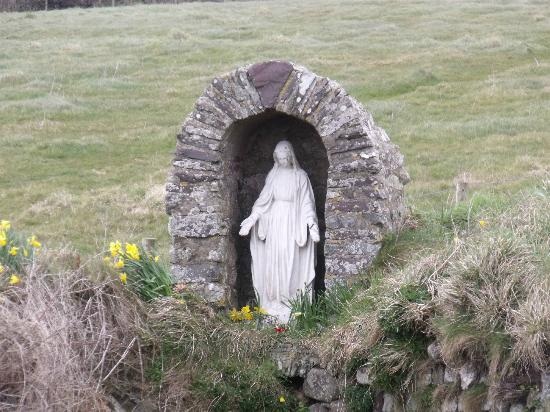
If you are going separate Christianity from the church it would be bad scholarship to then use churches theology to demonise its ancient origins....
The Truth might be based in fairy tale.
en.m.wikipedia.org...


Your link did not work, so I had a look into the term "territorial spirits" and you might be right, but the demonisation is through indoctrination.
A territorial spirit is also guardian angel... "Demon" is associated to territorial spirit in Christian context.
The existence of territorial spirits is viewed as significant in spiritual warfare within these Christian groups.
en.m.wikipedia.org...
They might well parallel the sacred well goddess/guardian who was said to facilitate journeys into the otherworld, paradise, or land of the fae.
A guardian angel is an angel assigned to protect and guide a particular person, group, kingdom, or country.
en.m.wikipedia.org...
You see the same old myths are what christian theology is built upon..
Belief in guardian angels can be traced throughout all antiquity. The concept of tutelary angels and their hierarchy was extensively developed in Christianity in the 5th century.
A tutelary (also tutelar) is a deity or spirit who is a guardian, patron or protector of a particular place, geographic feature
en.m.wikipedia.org...
Your quotes are simply confirming the superimposing of Christian theology over the ancient "mythology" and the subsequent demonisation.
I don't think it's fair to mash up theological history all into this Christian/pagan meatloaf, and be expected to eat it. It sounds good but what's really in it.
This thread is simply highlighting how ancient beliefs, mythology and historical theology has been mashed into a Christian/catholic meatloaf, therefor labelling the native ingredients so you can see what's in it.
In the late 6th century A.D. Pope Gregory I wrote a letter to Abbot Mellitus stating the following:
"Tell Augustine that he should by no means destroy the temples of the gods but rather the idols within those temples. Let him, after he has purified them with holy water, place altars and relics of the saints in them.

If you are going separate Christianity from the church it would be bad scholarship to then use churches theology to demonise its ancient origins....
The Truth might be based in fairy tale.
en.m.wikipedia.org...


edit on 3-1-2015 by Wifibrains because: (no reason given)
The lady by the well.

It is interesting that so many characters in the bible meet their wives at the well, including Jacob and Moses whom both had significant visions.
www.themirroredbridalchamber.com...
Jesus himself was thought to have a wife, this woman is mentioned as Mary (of/the Magdalene) in four of the gospels, most notably John the Baptist, who said he knew Jesus as the bridegroom.
But who was Mary Magdalene?
www.smithsonianmag.com...
Magdala nunaya, meaning "tower" of the "fish"
Although Mary was not one of the 12 apostles who received the Holy Ghost, it is interesting that she was later considered the apostle to the apostles.
The migdal nunya?
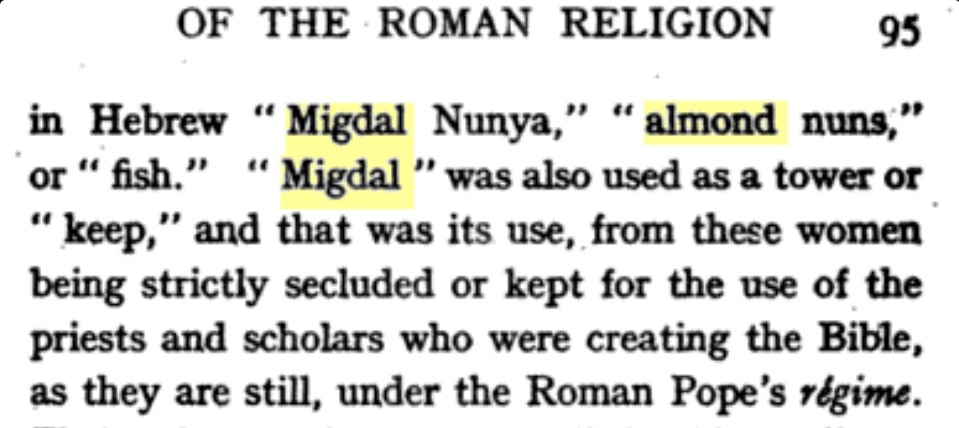
Migdal Nunya
When Jesus was asked by his deciple's about Mary...
Is Mary Magdalene the lady of the well?

It is interesting that so many characters in the bible meet their wives at the well, including Jacob and Moses whom both had significant visions.
Jacob met his wife, Rachel, at a well. This happened early in the day as well when fewer people were around to interrupt their interactions:
Abraham’s servant, found a wife for Abraham’s son, Isaac, at a well.
Moses, the Samaritan hero, found his wife at a well in Midian when he chased off shepherds harassing the seven daughters of Jethro and watered the flock of the girls.
www.themirroredbridalchamber.com...
Jesus himself was thought to have a wife, this woman is mentioned as Mary (of/the Magdalene) in four of the gospels, most notably John the Baptist, who said he knew Jesus as the bridegroom.
But who was Mary Magdalene?
Who was she? From the New Testament, one can conclude that Mary of Magdala (her hometown, a village on the shore of the Sea of Galilee) was a leading figure among those attracted to Jesus.
In the gospels several women come into the story of Jesus with great energy, including erotic energy. There are several Marys—not least, of course, Mary the mother of Jesus. But there is Mary of Bethany, sister of Martha and Lazarus. There is Mary the mother of James and Joseph, and Mary the wife of Clopas.
Equally important, there are three unnamed women who are expressly identified as sexual sinners—the woman with a “bad name” who wipes Jesus’ feet with ointment as a signal of repentance, a Samaritan woman whom Jesus meets at a well and an adulteress whom Pharisees haul before Jesus to see if he will condemn her.
www.smithsonianmag.com...
All four gospels refer to a follower of Jesus called Mary Magdalene, and it is usually assumed that this means "Mary from Magdala". There is no biblical information to indicate whether this was her home or her birthplace. Most Christian scholars assume that she was from the place the Talmud calls Magdala Nunayya....
en.wiki
Magdala nunaya, meaning "tower" of the "fish"
Although Mary was not one of the 12 apostles who received the Holy Ghost, it is interesting that she was later considered the apostle to the apostles.
The migdal nunya?

Migdal Nunya
When Jesus was asked by his deciple's about Mary...
They said to him "Why do you love her more than all of us?" The Savior answered and said to them, "Why do I not love you like her? When a blind man and one who sees are both together in darkness, they are no different from one another. When the light comes, then he who sees will see the light, and he who is blind will remain in darkness."
Is Mary Magdalene the lady of the well?
The Samaritan woman at the well is a figure from the Gospel of John, in John 4:4–26. In the traditions of the Eastern Orthodox Church, she is considered to be a saint, named Photine or Photini/Photina (the luminous one, from φως, "light").
edit on 5-1-2015 by Wifibrains because: (no reason given)
originally posted by: JohnnyCanuck
Oh puleeeeze...the only thing simple here is the insistence upon imposing one's mythology upon others who decline to share it. It's tiresome when people park their brains, yet turn up the volume.
So you basically have nothing to add, other than to criticize. And no response to my post. Just gibberish about penises, that is very telling.
Two things, I realised a while back that the pagan/natural roots of Christianity don't erode it...rather, they buttress the universality of much of the religion. That's actually a good thing.
Secondly, I have a cast-iron Green Man on my deck. He seems to like it there.
There are NO pagan roots of Christianity, and your green man has nothing really to do with the topic at hand.
originally posted by: Grimpachi
a reply to: Chronogoblin
It looks to me as though you have fallen for propaganda perpetuated by your faith. Your beliefs on this subject can not be corroborated by anything outside your faith. What your saying is tantamount to the claims that dinosaur bones were planted by the devil. It seems you have been brainwashed.
Throughout human history there have been millions of deities and the Abrahamic religion certainly was not even close to being the first.
It was the first because it was created first. Just because mankind hadn't written it down, doesn't mean it wasn't there. God makes Himself known to all that there be no excuse. It seems to me as if you have fallen for propaganda perpetuated by your faith. Your beliefs on the subject can not be corroborated by anything outside of your 'faith-in-man.' I said nothing about dino bones, YOU did. Don't drag this down another hole because you don't have an answer. You don't like God, fine, but don't tell me that He's not real simply because you don't agree. It doesn't matter what you think is real, it only matter what actually is.
a reply to: Observationalist
Haven't you ever wondered why Christians bring in a tree at Christmas? or eat chocolate bunnies at Easter?
Have you ever really thought about any of this?
Haven't you ever wondered why Christians bring in a tree at Christmas? or eat chocolate bunnies at Easter?
Have you ever really thought about any of this?
As this thread has amply shown, the practice of Christianity...it's liturgy, as it were...is rife with the symbolism of the religions that it replaced. As to the relevance of The Green Man to this discussion? Here's a read for you: Link
originally posted by: Chronogoblin
There are NO pagan roots of Christianity, and your green man has nothing really to do with the topic at hand.
If your argument is that Christ never preached anything that we see as relating to the old practices - well, I'm no biblical scholar, but I know he did not have a scribe following him around at the time so anything that has been attributed to him has been judiciously filtered. One might want to disengage the blinders, eh?
originally posted by: Wifibrains
a reply to: Chronogoblin
I fail to see how satan plays into this unless he is the church itself.
This is not about the morals or dogma provided by the church. It is about what stood before the imposition of such beliefs.
Not altogether sure what you mean? Could you be a bit more clear? Your talking about what came before the actual religion was penned? You know what, it just occurred to me, that before a certain time on this planet, everyone believed in a Creator, they even planned to somehow assault Heaven, and try to kill God. Then he confused their languages, so that they were split into other cultures in an instant. After that, well, people started to call God by all kinds of names. But it was all the same person.
a reply to: Wifibrains
in regard to that chart with the trinity...mathematically speaking, if a = d and b = d and c = d, then it stands to reason that a = b = c. so that chart makes no sense.
in regard to that chart with the trinity...mathematically speaking, if a = d and b = d and c = d, then it stands to reason that a = b = c. so that chart makes no sense.
new topics
-
Disney’s Snow White | Official Trailer | In Theaters March 21
Movies: 55 minutes ago -
UnitedHealthcare CEO Brian Thompson shot dead in Midtown Manhattan, masked gunman at large
Other Current Events: 1 hours ago -
More NY Justice System Corruption
Social Issues and Civil Unrest: 5 hours ago
top topics
-
More NY Justice System Corruption
Social Issues and Civil Unrest: 5 hours ago, 16 flags -
US spent $151 BILLION on illegal immigration in 2023 alone: DOGE
US Political Madness: 17 hours ago, 12 flags -
Liven things up with some COMMUNITY!
General Chit Chat: 17 hours ago, 9 flags -
CIA Whistleblower Kevin Shipp claims CIA was involved in MH370's disappearance
General Conspiracies: 17 hours ago, 8 flags -
Would Democrats Be in Better Shape if They Had Replaced Joe Biden with Kamala Harris in July 2024.
US Political Madness: 12 hours ago, 7 flags -
President Biden is Touring Africa. Why?
Politicians & People: 16 hours ago, 6 flags -
UnitedHealthcare CEO Brian Thompson shot dead in Midtown Manhattan, masked gunman at large
Other Current Events: 1 hours ago, 5 flags -
Disney’s Snow White | Official Trailer | In Theaters March 21
Movies: 55 minutes ago, 3 flags
active topics
-
UnitedHealthcare CEO Brian Thompson shot dead in Midtown Manhattan, masked gunman at large
Other Current Events • 13 • : chiefsmom -
Disney’s Snow White | Official Trailer | In Theaters March 21
Movies • 5 • : Athetos -
Alien warfare predicted for December 3 2024
Aliens and UFOs • 87 • : Arbitrageur -
Salvatore Pais confirms science in MH370 videos are real during live stream
General Conspiracies • 89 • : b0kal0ka -
President Biden is Touring Africa. Why?
Politicians & People • 15 • : Coelacanth55 -
US spent $151 BILLION on illegal immigration in 2023 alone: DOGE
US Political Madness • 5 • : marg6043 -
Would Democrats Be in Better Shape if They Had Replaced Joe Biden with Kamala Harris in July 2024.
US Political Madness • 24 • : WeMustCare -
Great Barrier Reef Attacks and Sinks New Zealand Frigate HMNZS Manawanui
Weaponry • 69 • : grey580 -
CIA Whistleblower Kevin Shipp claims CIA was involved in MH370's disappearance
General Conspiracies • 16 • : b0kal0ka -
-@TH3WH17ERABB17- -Q- ---TIME TO SHOW THE WORLD--- -Part- --44--
Dissecting Disinformation • 3481 • : angelchemuel
